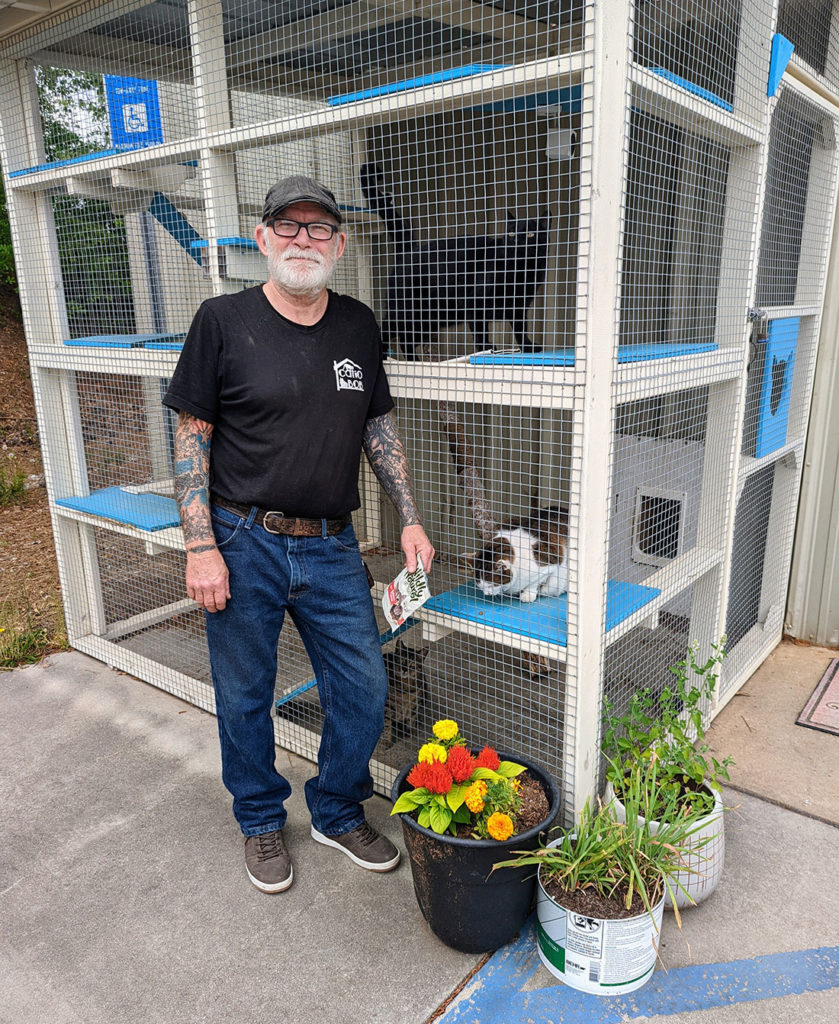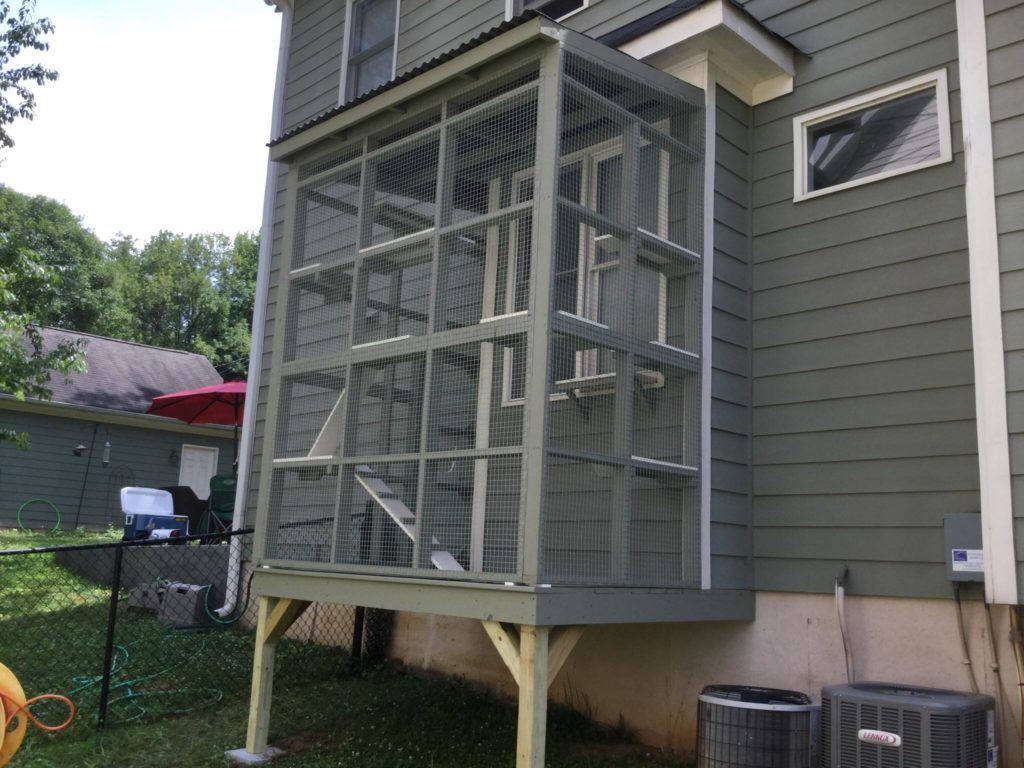The often aloof nature of cats lends to an impression of them as lonesome outdoor wanderers, but the idea of keeping pet cats indoors is gaining more traction and momentum—for their own wellbeing and the wellbeing of wildlife around them.
Traffic, disease and other predators are a threat to cats’ life, but cats pose their own threat as a neighborhood predator. In 2020, a tracking study reported by NPR revealed that house cats can have four to 10 times more impact on local wildlife than wild predators. So, there’s a good case to keep your feline friends indoors. The “catio” craze—playing on the words “cat” and “patio”—has provided a solution to ensuring that your cat can still live a healthy, stimulated and fulfilled life as a homebody.
One of the Southeast’s most in-demand catio builders lives right in our Athens community: Robert Johnston, known as Catio Bob. Johnston specializes in building highly customizable catios for any indoor or outdoor space suitable for the largest, lazy house cat to the elderly or those with special needs. At their most basic, these catios consist of panels made from wood and wire mesh with various enrichment walkways and accessories inside.

Before retirement, Johnston built large animal enclosures commercially for 17 years. These enclosures housed large groups or colonies of animals for boarding facilities, research facilities and kennels. While discussing what he was going to do post-retirement to stay busy and out of trouble, a coworker recommended that Johnston build catios. Having never heard of one, Johnston began doing research online and, in addition to discovering they were exactly what he was currently doing but on a smaller scale, found that there was a lack of specialized builders in the national market. Four years ago, he filed the Catio Bob, LLC and set out to perfect the catio build.
“It was like somebody opened a floodgate. You’re building catios?! I’m getting emails and calls from you name a state. Except for I haven’t got one from Hawaii or Alaska yet,” says Johnston. “What I thought would be just maybe once every two or three months, I’d build one, turned into I’m doing one or two a week.”
Although the catios are designed to be a complementary addition to the home, homeowners’ associations can be resistant and place guidelines on the structures. However, Johnston proudly claims that he has yet to have an HOA refuse any of his plans, especially once they’ve seen his portfolio and understand that a catio is not equivalent to “Farmer John’s funky chicken coop.” Everything is customizable, though, based on the customer’s wishes. Some catios are additional structures minimally attached to the house and painted the same color, some are enclosed spaces under or on top of existing decks, and some are painted to be fun and expressive rather than a blend.
“When we go inside these catios, we have no set plan. Sometimes not even a preconceived plan of where any of these walkways and platforms are going to go because we go in, put the shell up and then we start looking at environmental things around the catio that maybe a cat would like to see,” says Johnston. “You don’t want to put a bunch of platforms in a walkway back over here in a corner where there’s two dead walls and there’s nothing to see. You want to be on the outside edges looking at that bird feeder and squirrel tree over there.”

While a catio is something anyone could potentially build, Johnston has put a lot of thought and research into his materials and designs. The mesh used is strong enough to keep pets in, deter humans and keep wildlife out (up to a bear) but not sharp in a way that could cause harm to the pads of a climbing or clawing cat paw. Any brackets used are specially designed to not create open spaces where a cat could accidentally get hung up. Some cat-approved favorite customizations are the firehose hammocks and plexiglass bubble beds.
Many customers take advantage of using catios as a shared space, combining the comforts of cat playthings with patio furniture and even ceiling fans. The catios feature external litter boxes that can be cleaned from the outside, which provides a private bathroom and removes an unpleasant fixture. For shared spaces, Johnston recommends an insect screen overlay that is added to the default mesh.
Because there is minimal attachment to the house and the catio panels are screwed together, it is very easy to relocate or sell a catio. Some of the builds that are precisely custom-fit to the space are unable to be moved, but once the shelving and enrichment toys are uninstalled, the space becomes a regular screened patio. Everything can be moved, or removed, via screws, so adding enrichment options or changing the ones already there based on your pet’s needs is a simple fix.

Johnston has created builds and donated cat towers to several nonprofits, rescues and animal shelters around the area. When Samantha Martin of Rock Cats Rescue needed assistance with the Amazing Acro-cats bus, Johnston rebuilt the entire “kitty city” in the back of the group’s tour bus. Catios are growing in popularity at animal shelters due to the vast health benefits for the adoptees. Madison Oglethorpe Animal Shelter has reported to Johnston that the cats are finding better fit “forever homes” and adoption rates have increased since the addition of the catio on the front of the facility.
“When you go to some of these intros at the shelters, they just bring you in an empty room with a chair and some cat toys to maybe try to play with. It’s a strange room for these guys. Now they’ve had time to sit out there, hang out, acclimate, decompress. Now you’re seeing a relaxed, normal cat and what their MO is like,” says Johnston. “It makes me feel good to see these guys get that time. Give cats equal time.”
Like what you just read? Support Flagpole by making a donation today. Every dollar you give helps fund our ongoing mission to provide Athens with quality, independent journalism.










